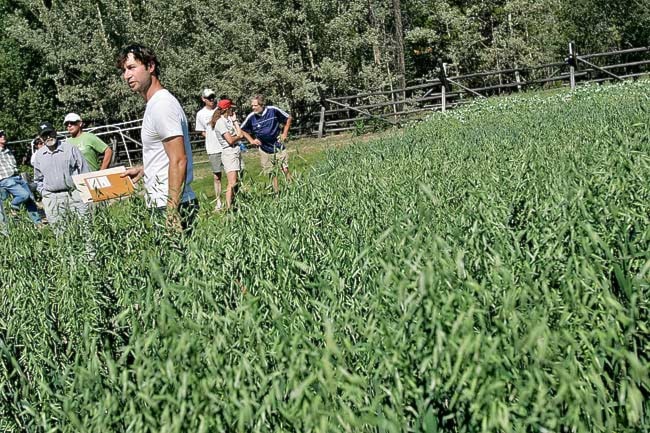Farmers can now rely on the sun to quench the thirst of their livestock.
Through solar panels, the watering system taps the sun’s energy to pump water from a source, like a pond, up to the livestock’s troughs.
The system is so efficient, it can empty pothole lakes that lack a constant water flow.
SDLqIf you dry out a pond, you’re drying out your water source anyway,” said Brad Barton, a research technician with Yukon’s agriculture department.
The system delivers a big environmental benefit.
“You don’t need hydro,” said Barton. “You’re not cutting down trees to get hydro into an area. You’re protecting habitat areas around a pond. The big thing is its low energy consumption.”
Because the livestock isn’t walking into the pond to drink, the riparian area - the strip of land around the water - isn’t being trampled.
“The reason it’s great for a pond is that it helps protect that riparian area around the pond and you can pump the 20, 30 feet away from that pond so you’re protecting that pond and the horses are getting water there instead of having to get into that pond, with trip hazards, and disturb the pond’s habitat,” said Barton.
The Prairie Farm Rehabilitation Administration funded the project as an attempt to repair these areas that had been damaged by livestock, like horses or cattle, in the past.
“So it’s that environmental practice that you’d want to follow.”
It also benefits farmers.
It eliminates hydro and electricity costs when watering the animals, but is also easily portable, said Barton.
“The nice thing about the way it’s set up is ... the tank actually folds up and you can move this to another watering area. Say you rotate your cattle to another field, you don’t have to have a tank for each field. You can take the tank with you.”
With a few adjustments, the system can have other purposes as well.
“If you really wanted to MacGyver it, one option would be, say you have a garden and you need water for your garden.”
The water could be pumped up to the garden then released as needed through watering lines attached to the tank’s spout.
The estimated cost of the system is $5,000.
People used to farm right up to the waterways, which affected the areas right around the water. The organization wanted to reclaim these areas and start protecting it again, said Barton.
Yukon farmland riparian areas were seeing similar degradation, so the project was brought to the territory through the Yukon Agricultural Association.
The territory’s agriculture branch demonstrated it under the hot sun last Wednesday afternoon at the research farm.
The Yukon Agricultural Association is demonstrating other watering projects, like the nose pump at Dave Andrew’s farm near Frog Mountain, to show new methods of watering their livestock.
Cattle press their noses against a button on the wall and water is pumped from a dugout into the troughs.
This allows them to have water when they want and how much they want.
“Cattle are quite prone to pushing against things anywhere whether it’s fences or feed troughs,” said Rick Tone, executive director for the agricultural association. “The first thing they start to do is butt against the pump handle and find, low and behold, more water comes out. Once one or two of them have got the knack of this, the others quickly learn. It’s a learned behaviour.”
Farmers seem interested in the new equipment.
“I actually had a discussion with a farmer today (about the solar panel system). He said, ‘Hey we could use that as well.’ So there is a need for it,” said Barton. “What we want to do is make sure infrastructure like that is available.”
Contact Larissa Robyn Johnston at larissaj@yukon-news.com
